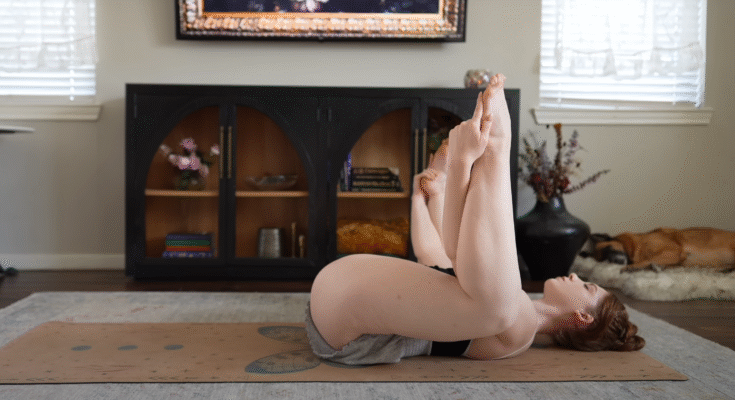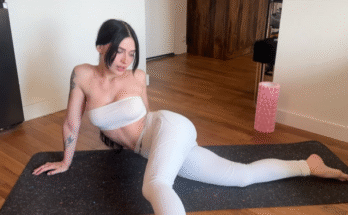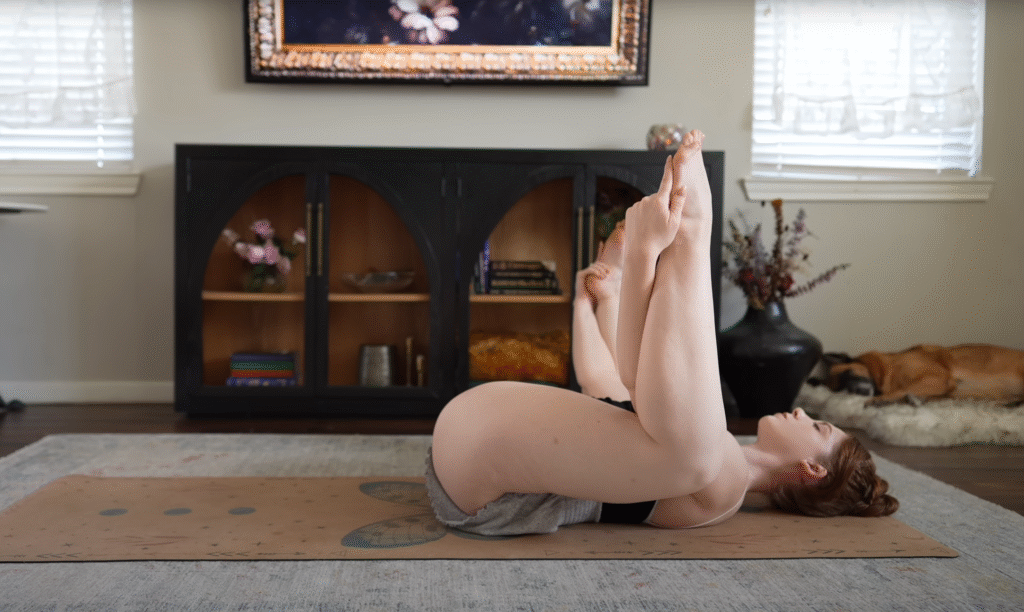
In today’s fast-paced world, our bodies often carry the burden of constant movement, stress, and long hours of sitting. Tight muscles, stiff joints, and a restless mind can easily become part of daily life if we don’t take time to care for ourselves. One of the simplest yet most powerful practices to counter these effects is slow stretching—a mindful, relaxing approach to improving flexibility while calming the nervous system.
Unlike dynamic stretching or high-intensity workouts, slow stretching is gentle, deliberate, and deeply restorative. It’s not just about making your muscles longer; it’s about creating space, releasing tension, and connecting with your body on a deeper level.
This article will guide you through the benefits of slow stretching, how to practice it, and a complete relaxing flexibility routine you can do in just 20–30 minutes.
Why Slow Stretching Matters
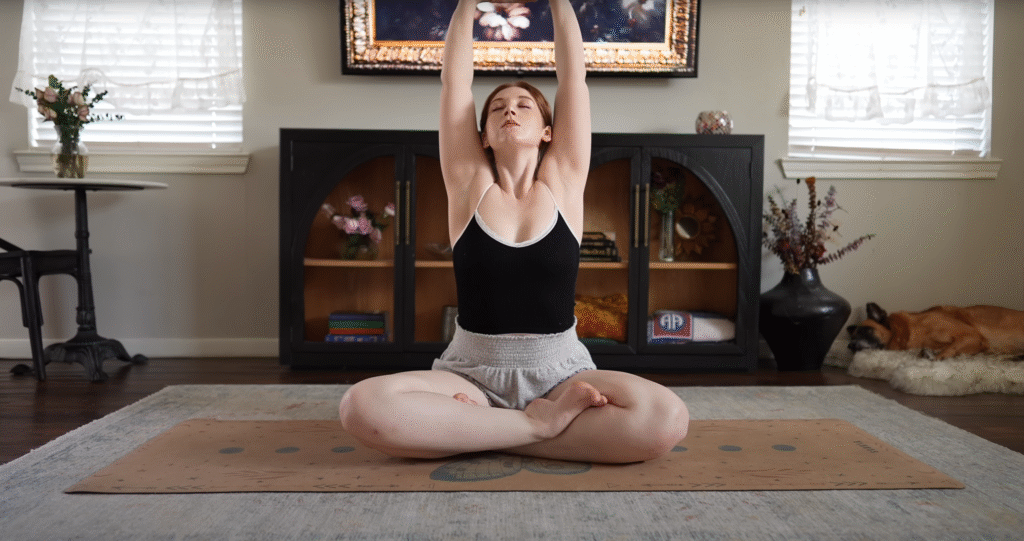
When you stretch slowly, you give your muscles and connective tissues time to adapt and release. Here’s why it’s so effective:
- Increases Flexibility Safely – Moving gradually prevents strain and allows your body to relax into each position.
- Enhances Relaxation – Stretching slowly activates the parasympathetic nervous system, helping reduce stress.
- Improves Blood Flow – Sustained stretches promote circulation, delivering oxygen and nutrients to tight muscles.
- Supports Recovery – Ideal after workouts or long periods of sitting, slow stretching helps repair micro-tension in tissues.
- Connects Body & Mind – The deliberate pace creates mindfulness, turning a physical exercise into a meditative practice.
How to Practice Slow Stretching
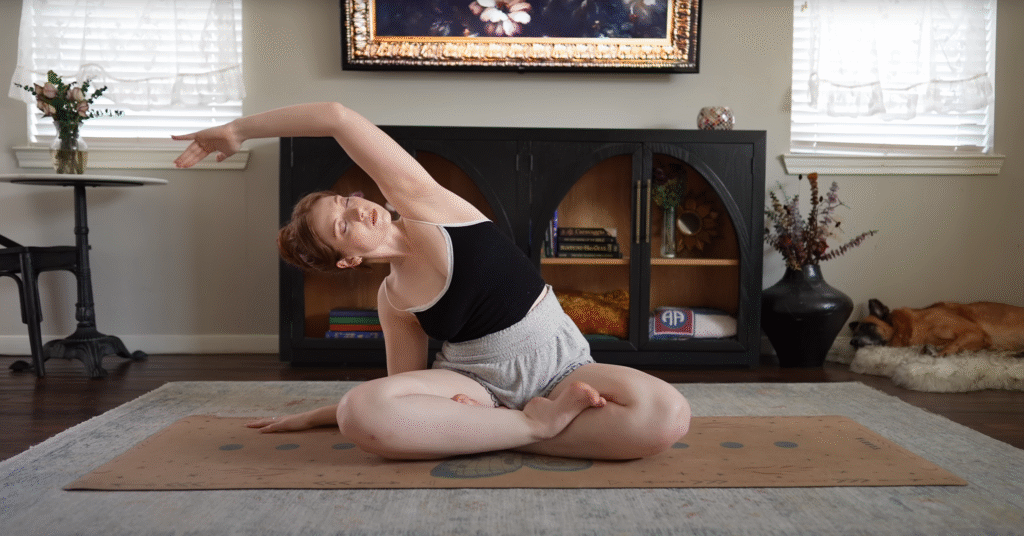
- Move Gradually: Enter each stretch gently, pause, and deepen only if your body feels ready.
- Hold Longer: Instead of quick movements, stay in each position for 1–3 minutes.
- Breathe Deeply: Inhale through your nose, exhale slowly through your mouth. Let your breath guide your stretch.
- Use Props: Cushions, yoga blocks, or rolled towels can support your body for comfort.
- Listen to Your Body: Stretch to the point of mild tension, never sharp pain.
A Slow Stretching Routine for Relaxing Flexibility ✨
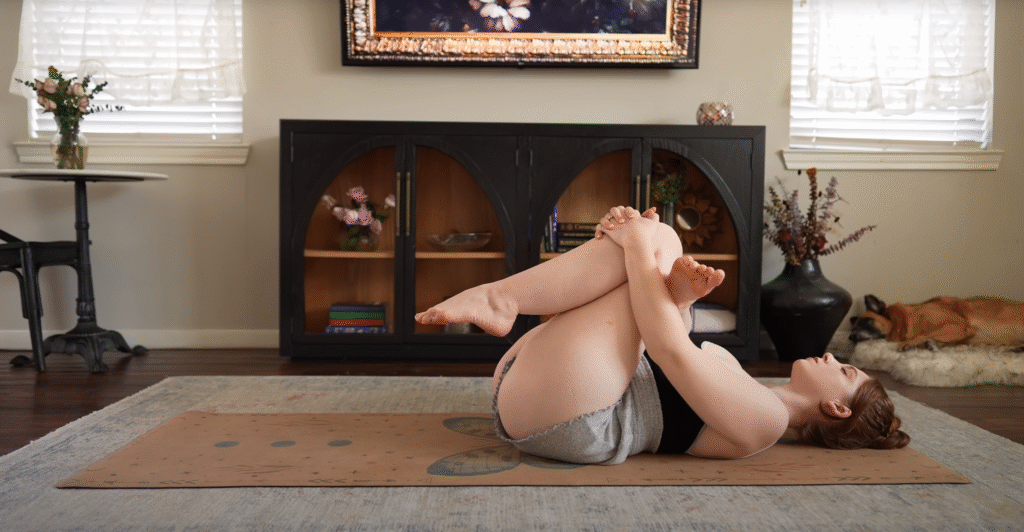
This 20–30 minute sequence can be done in the morning, before bed, or anytime you need to release stress.
1. Neck Release (2 Minutes)
Sit or stand tall. Drop your right ear toward your shoulder and hold, feeling the stretch along the side of your neck. Switch sides.
- Why: Relieves tension from poor posture or screen use.
- Tip: Place your hand gently on top of your head for a deeper stretch—no force.
2. Shoulder Rolls & Stretch (2 Minutes)
Roll shoulders slowly backward and forward 5–10 times. Then, cross one arm over your chest and gently hold it in place with your opposite arm. Switch sides.
- Why: Loosens tight shoulders, improves mobility, and eases stiffness.
3. Seated Forward Fold (3 Minutes)
Sit with legs extended forward. Inhale to lengthen your spine, then exhale as you hinge at the hips, folding gently. Rest hands on your shins, ankles, or feet.
- Why: Stretches hamstrings, lower back, and spine.
- Tip: Place a cushion on your thighs to rest your chest for comfort.
4. Cat-Cow Stretch (3 Minutes)
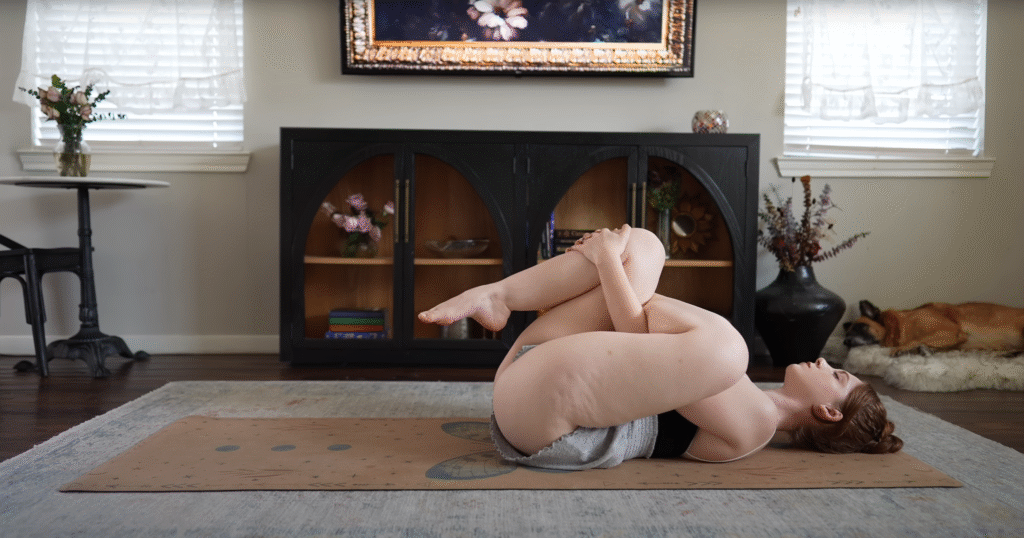
On hands and knees, inhale as you arch your back (Cow Pose), lifting your chest. Exhale as you round your spine (Cat Pose), tucking chin to chest. Move slowly.
- Why: Improves spinal flexibility and warms up the back.
- Tip: Synchronize breath with movement for deeper relaxation.
5. Hip Opener – Butterfly Stretch (3 Minutes)
Sit with soles of your feet together, letting your knees fall open. Hold feet or ankles and relax forward.
- Why: Opens hips, inner thighs, and groin.
- Tip: Place pillows under knees for support if they hover above the ground.
6. Low Lunge Stretch (2 Minutes Each Side)
Step your right foot forward into a lunge, left knee on the floor. Sink hips forward gently. Hold, then switch sides.
- Why: Releases tight hip flexors and thighs.
- Tip: Rest hands on blocks or thighs if the stretch feels too intense.
7. Spinal Twist (2 Minutes Each Side)
Sit tall with legs extended. Cross your right foot over your left thigh, plant it on the floor, and twist your torso toward the right. Hold, then switch sides.
- Why: Improves spinal mobility, eases lower back tension, and massages abdominal organs.
8. Seated Side Stretch (2 Minutes Each Side)
Sit cross-legged or with legs extended. Reach your right arm overhead and lean gently to the left, opening your side body. Switch sides.
- Why: Stretches obliques, intercostal muscles, and spine.
9. Reclined Hamstring Stretch (2 Minutes Each Side)
Lie on your back, extend your right leg upward, holding behind the thigh or calf. Keep the other leg bent or extended on the floor. Switch sides.
- Why: Stretches hamstrings and calves, improves flexibility.
- Tip: Use a strap or towel around your foot if needed.
10. Supine Spinal Twist (3 Minutes)
Lie on your back, pull one knee into your chest, then guide it across your body. Extend arms wide and look opposite to the twist. Switch sides.
- Why: Releases lower back and hips, relaxes the nervous system.
11. Final Relaxation (Savasana) – 3 Minutes
Lie flat, arms at your sides, palms up. Close your eyes, let your breath become natural, and allow your body to absorb the benefits of practice.
- Why: Integrates flexibility work with relaxation, restoring balance.
Breathing Techniques During Stretching
Breath transforms stretching from mechanical to mindful:
- Box Breathing (4-4-4-4): Inhale for 4, hold for 4, exhale for 4, hold for 4.
- Exhale Release: Imagine tension leaving your body each time you breathe out.
- Belly Breathing: Place a hand on your stomach, feeling it rise and fall with each breath.
Benefits You’ll Notice After Practicing ✨
- Improved Flexibility: Muscles lengthen naturally with consistent slow stretching.
- Less Muscle Tension: Shoulders, hips, and lower back feel lighter and freer.
- Better Posture: Mobility in joints supports a healthier stance.
- Mental Calmness: Slow movements reduce stress and improve focus.
- Enhanced Recovery: Helps muscles repair after workouts and reduces soreness.
Tips for Success
- Be Patient: Flexibility comes gradually; progress is subtle but steady.
- Create a Relaxing Atmosphere: Dim lights, calming music, or essential oils can enhance the experience.
- Practice Regularly: 3–4 sessions per week will bring noticeable results.
- Pair with Hydration: Drink water after stretching to support tissue recovery.
- Stay Present: Focus on how your body feels rather than how it looks.
Final Thoughts ✨
Slow stretching is more than just a flexibility practice—it’s a form of moving meditation. By slowing down, holding stretches, and breathing deeply, you allow your body to release not just physical tightness but also mental tension.
This relaxing flexibility routine is perfect for anyone: athletes needing recovery, office workers with stiff hips, or anyone wanting to add calm balance to their day. In as little as 20–30 minutes, you’ll feel lighter, looser, and more centered.
So, roll out your mat, move with intention, and let slow stretching remind you that relaxation and flexibility go hand in hand. With practice, you’ll not only become more flexible but also more grounded, peaceful, and connected to yourself. ✨
